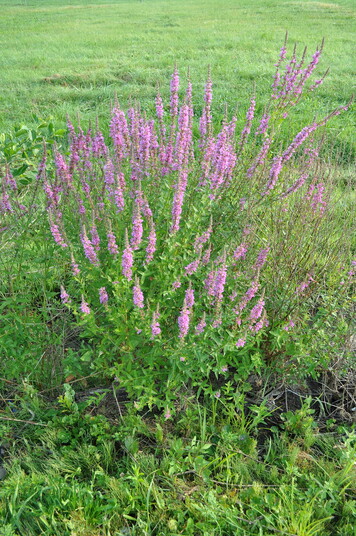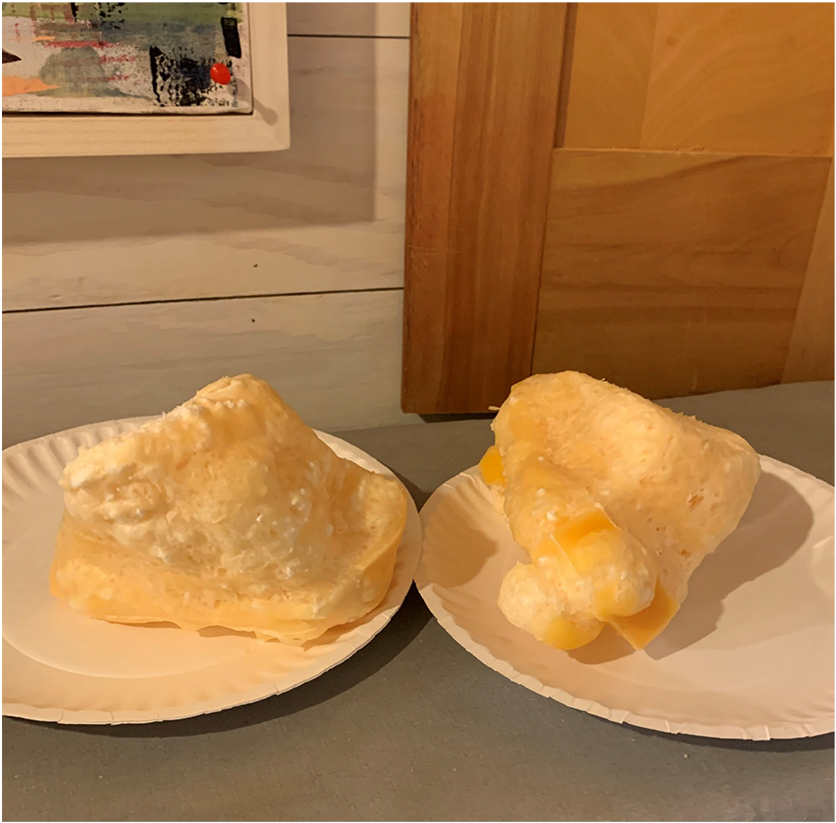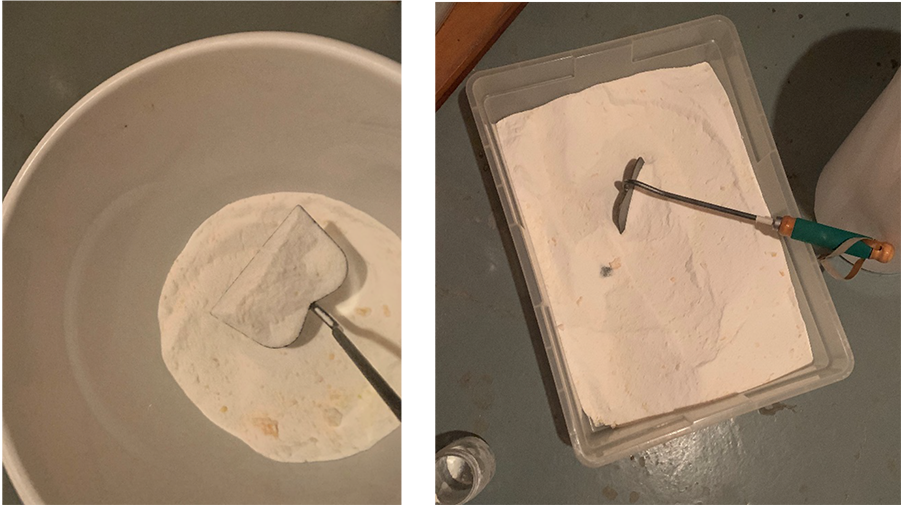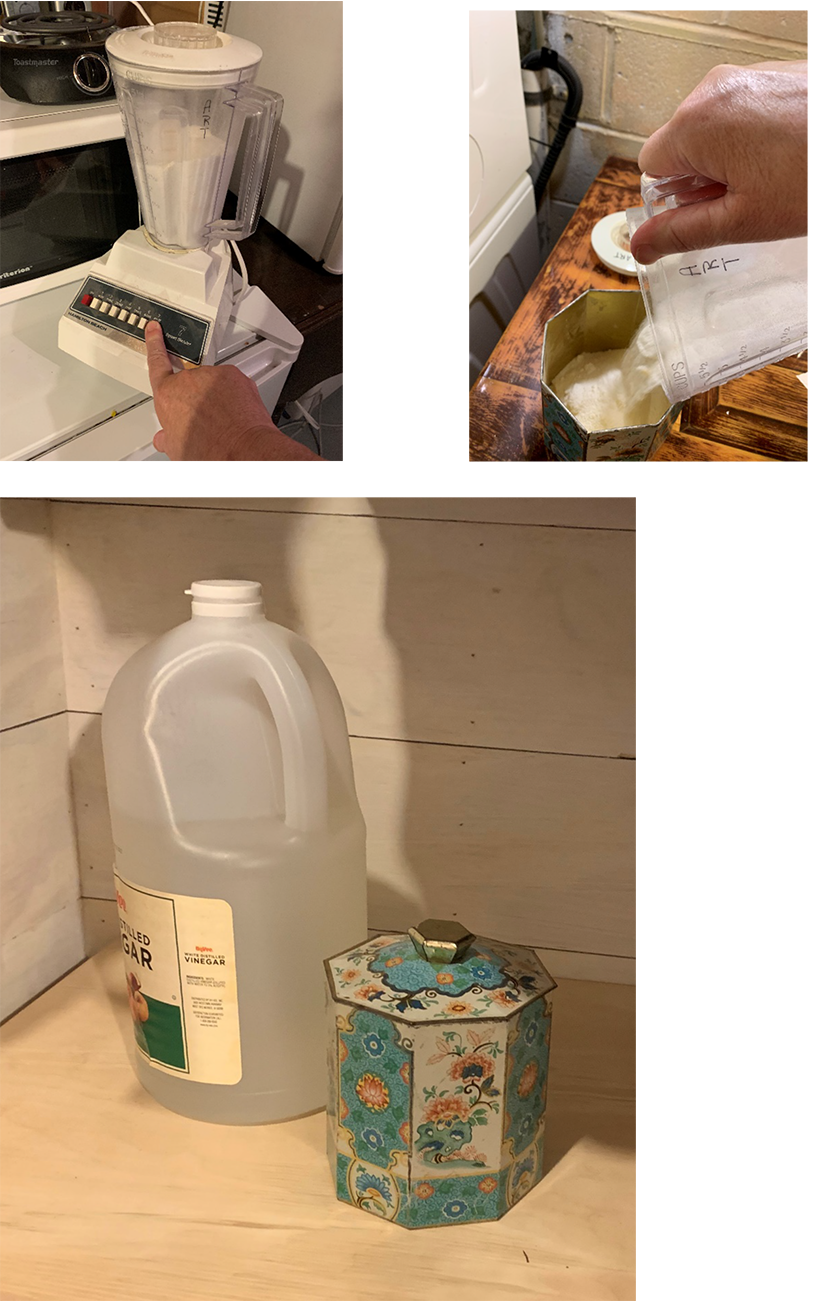Oma Sue's BlogHi – I’m Sue Reyzlik. I recently realized my life-long dream of building a writing hut in the backyard. The writing hut serves as a creative space and home office for Oma Publishing. This blog will be intermingled with family history, varied experiences and insights on being a Grandma (Oma), creating my special backyard space, as well as, my “retirement” career as a self-publisher of children’s stories. And perhaps a little bit on the 32 years I served as Executive Director for Keep Fremont Beautiful and the wonderful people who are sharing this adventure.
|
|
I can’t even begin to guess at how many different laundry products and cleaning products I have experimented with over the years. I’m almost 70 years old, so it has to be a lot! A few years back, my assistant at Keep Fremont Beautiful was telling me how she made her own laundry detergent. Cathi explained how easy it was to make and how good it was at cleaning. She went on to tell me that you only use a tablespoon per wash – so a big batch lasts a long, long time and saves money. I liked the idea of saving money. Instead of buying gallon after gallon jug of laundry detergent, you make up a single batch and it lasts… The first batch I made lasted a long time – but I didn’t keep track. The second batch lasted about the same amount of time as the first… I tweaked the third batch and it lasted over two and 1/2 years. I just mixed up another batch (we’ll have to wait and see how long this one lasts) and it got me thinking that I should document the ingredients and directions as a blog entry! Save it for posterity and all that. Mom made great cookies and her recipes are cherished by many. I evidently can make a long lasting and fairly decent laundry detergent… it won’t be cherished, but it should be saved in the off chance a future descendant might want to give it a try! So anyway - another plus for making your own laundry detergent – less waste. My particular recipe includes paperboard packaging for three of the ingredients, a plastic container for one ingredient and simple paper wrap for each of the bars of soap. All may be recycled! I want to make it clear that I didn’t come up with the list of ingredients. Cathi gave me the original recipe and then I kind of made it up from memory the second time – that may have been when the Oxy Clean got added or maybe it was the Baking Soda. The amounts were measured in cups in the original recipe – the second time I mixed up a batch I decided that it wasn’t necessary for me to be so precise. (I probably should tell you that I have a problem making Jello... the whole measuring and direction thing is so constraining…) Just know that you don’t have to use all the ingredients – Oxy Clean or Borax may bother people with sensitive skin – those ingredients don’t bother me so I include both for extra cleaning power. I gave myself permission to tweak the recipe and I give you permission to do the same. Don’t use Borax if you don’t want to! Use half the amount of Oxy Clean or leave it out – it’s up to you. Just know that making Laundry Detergent isn’t Jello – you can improvise a bit – it’s OK. Also – feel free to check out actual experts online and get their recipes based on actual science or something. For now, you can just look below and find the most current listing of ingredients used in the making of “Oma Sue’s Laundry Detergent”. (ALMOST as memorable as Grandma Alyce’s Chocolate Pixies or Aunt Kay’s Sherry Cake… ya Oma Sue’s Laundry Detergent recipe will go right up there with the other family greats!) Ingredients: Big Thing of Oxy Clean Big Box of Borax Big Box of Washing Soda Big Box of Baking Soda 2 Big Bars of Fels Naptha Soap First – I take a bar of the Fels Naptha Soap (unwrap it) and put it on a paper plate. I put it in the microwave (on high) for a minute or two until it gets super big and airy. Then I take the second bar of soap and do the same thing. Now I have two big airy glops of soap! Set the soap aside and let it cool. (I have used Ivory Soap and another kind of natural soap, but I like Fels Naptha the best). Second Step - get a big container to hold and mix all the powders. I used a clean garbage can. Dump the Oxy Clean, Borax, Washing Soda and Baking Soda into the can. I stir up the powders as I dump so they get mixed up a bit. (I use a hand held garden hoe to stir – it works better than a spoon! But sometimes I have a hard time finding it – but today was no problem – found the hoe tucked in a shelf in the garage - hooray.) You might want to protect your lungs and wear a face mask when dumping powdery substances in a garbage can – just a thought. Third Step – It’s been awhile, so the Fels Naptha should be cooled down enough to grate. I use an old grater that I bought at the Habitat for Humanity Store. The grater is now dedicated to grating soap and only soap – not carrots – not potatoes – just soap. You don’t have to work too hard to grate the soap – it’s mostly fluff and just crumbles. A few chunks will remain but you can take care of those in step five. Fourth Step – Stir. Stir. Stir. At this point I didn’t know if I was getting my laundry detergent concoction mixed up enough and decided to transfer it to a lower and wider plastic storage container… (On reflection – this is a way better container for mixing… so in step two I would recommend replacing the garbage can with the plastic storage box – sorry for the bad advice in step two – my bad.) Fifth Step – You can use the powdered laundry detergent like it is but I like it really – really – really mixed up. I like it blended. So… I take my old “Art” blender, that I used to make artwork back in the day, and I put a couple of pints of the powder in the blender and blend it! Then I take the blended powder and store it in this little metal storage container. (The metal storage container was filled with dried flowers and was a gift from a garden club. I spoke to their group a million years ago about keeping Fremont beautiful and they graciously gave me this repurposed container as a token of their appreciation. All these years later, the little metal container gifted to me by the garden club, works perfect for storing a month’s worth of laundry detergent. FYI – I like reusing and repurposing as much as possible – that little can is adorable. Now you are ready to do laundry – remember you use one tablespoon of the powder for each load. The little measuring spoon in the picture is ½ tbs – two of those and you are set to go! (If your laundry is super-duper dirty, add another ½ tbs.)
Note: I don’t like scents – I get a whiff of perfume and my sinuses swell up. Scented hand soaps and lotions have been known to give me a fierce headache. The only scent in the laundry detergent recipe comes from the Fels Naptha and it is slight. If scents are important to you, I’m sure there are things you can add to smell it up a bit – but that’s up to you to figure out. I like my laundry detergent not smelly! On a related note: I don’t use fabric softeners. I stopped using fabric softeners because I didn’t want the scent lingering on my clean laundry. I know you can get unscented fabric softener but I quit because of the scent and ended up not missing it. I do however, fill the fabric softener dispenser with vinegar. I like the “idea” that the vinegar is killing germs and removing all the residual dirt and detergent from my clothing, bedding and towels. Five years later, I’m glad that I gave the DIY Laundry Detergent a try. I like saving money and reducing waste. I know exactly what is in my detergent – no fillers or added ingredients that don’t really do anything. I’m glad I found my hand-held hoe – that little tool makes stirring so much easier. If you are going to use a garden hoe for stirring, make sure you clean it up good before getting started! So there – that’s my blog entry on DIY Laundry Detergent. Next up – cleaning with sage…
0 Comments
 Back in the day – when I was working as Executive Director of Keep Fremont Beautiful, we had an education program concerning the removal of purple loosestrife from home gardens. The home garden variety of purple loosestrife was promoted as sterile – it was supposedly a male version of the plant and so it couldn’t spread. Let me just say this… Purple Loosestrife is a pretty plant. OK – we all agree… pretty. But – we should all agree on another thing – just because something is a pretty thing, it doesn’t necessarily follow that it is a good thing! A lot of bad stuff comes in pretty packaging – looks can be deceiving. Purple Loosestrife may be attractive, but it is an invasive species… Purple loosestrife came to North America originally from Europe and Asia. The loosestrife seeds were unintentionally brought to North America in the ballast of ships and introduced into the Great Lakes region in the 1800’s. The Purple Loosestrife that was actually sold here in the U.S. and promoted as being sterile was in response to the beautiful but evil thing. People had figured out that purple loosestrife was bad but they were still trying to redeem it in a way - and keep it in the garden. The sterile purple loosestrife, sold in local garden centers, turned out to be not so sterile. With a little help from bees and other insects, the "sterile" loosestrife found a way to multiply and introduce itself into new areas. Purple loosestrife failed the cultivation containment experiment in a grand fashion. While some were trying to make purple loosestrife harmless, the wild plant was going wild. Each “wild” plant can produce hundreds of seeds that easily spread. The plants grow, multiply and create more seeds. Thus, infiltrating nearby wetlands and thriving in and along rivers and lakes. Wild deer will graze on the new plants but once the plant grows to about a foot high, the stalks are too woody and undesirable as a food source for wildlife. From the middle 1800’s on, Purple Loosestrife spread along the Nation’s waterways, altering the natural eco-systems along its path. The wetland areas were really messed up by the invasion of this pretty but seriously not meant to be there plant! People fought it but purple loosestrife kept advancing. Once a wetland is run over by loosestrife, the balance of the natural habitat is lost. Loosestrife just takes over and native plants and animals who depend on the wetlands for survival are negatively impacted by the invasion. It is awful! Like I said, wild deer will eat some of the small plants while the song birds will eat a bit of the seed (spreading the plants into other areas) but over-all the native wildlife are forced to eat the surrounding plants and that just makes it easier for the loosestrife to spread and assure its dominance. The following is an excerpt from an article published by the University of Nebraska: By feeding on other species, wildlife “eats itself out of house and home.” Loss of habitat and wildlife interferes with various levels of the ecosystem and influences many recreational activities, creating a negative effect on the social and economic well-being of local communities. With the loss of recreational land for fishing, boating and hunting, the local communities also lose tourism revenues. Stevan Knezevic, Extension Integrated Weed Management Specialist Doug Smith, Dixon County Noxious Weed Control Superintendent From what I've read, Purple Loosestrife had made its way to Nebraska by the 1950's. It is estimated that 18,000 acres are already infested by purple loosestrife. Attempts to eradicate this invasive species have proven to be impossible – as the Great Lakes Region can attest. Now, those in agriculture, weed control, flood control, tourism and recreation are simply trying to figure out how to live with this plant and attempt to control and mitigate the harm it does. I bring all this up because a friend was out at the Fremont Lakes and took a picture of a beautiful purple plant. It was gorgeous and the photo was excellent. I have to admit that I am not a plant expert, but it sure looked like Purple Loosestrife to me. I recommended that she tell the Parks Superintendent of the plants location so it could be evaluated. She did pass along the information. As we continued to discuss the purple plant, she indicated that a friend of hers had told her that she had that same plant in her garden. This made me think of the education program at KFB. It brought back how many homeowners had this plant in their yards and how we devoted considerable resources to encouraging people to remove the plants. Still - some purple loosestrife remains... In 2001, the Nebraska Legislature declared that purple loosestrife was a noxious weed. The Noxious Weed Control Act defines and places specific responsibilities for noxious weed control on landowners, individual counties, and the State of Nebraska. The Act is known as Title 25, Chapter 10, Nebraska Administrative Code - Noxious Weed Regulations. Under these regulations, purple loosestrife became a noxious weed as of January 2001 Soooo Purple Loosestrife - wild or "sterile" in the State of Nebraska is a Noxious Weed. Basically - It is your responsibility to remove noxious weeds from your property! Yes – even if they are pretty. True story - My cousin had purple loosestrife growing in her garden. A Department of Utilities employee came onto her property for electrical work and he identified that purple loosestrife was growing in her garden. She was ordered to remove the plant. She did so willingly. Keep Fremont Beautiful has always been about making our community and property beautiful. Colorful, well-tended gardens make for a better looking and more beautiful town! Noxious weeds just aren’t part of the beautiful “thing”. So when we started the KFB education program on purple loosestrife removal, most people understood the reasoning and the purpose behind the eradication process. A few did not. One gentleman wrote a long letter to KFB and openly stated that he would defy any attempts to remove the purple loosestrife from his property. As I recall he explained how, after a long day of work, he and his wife would sit in the garden, relaxing with a glass of wine and gaze upon the beauty of the plants and the quiet of the night. Perhaps he mentioned something concerning a sunset or maybe it was clouds drifting across the horizon… he painted a pretty picture. I wasn’t swayed. A lot of bad stuff comes in pretty packaging – looks can be deceiving. If your happiness depends on your ability to have noxious weeds in your garden… perhaps you are weird and should get some counseling. Seriously – habitat destruction – the loss of millions of acres of farmland – loss to the local economy - the loss of recreation areas – increased potential for flooding… you are seeming a tad selfish there, buddy! Sorry – no – I’m not sorry. Get rid of the loosestrife… dig it up and put it in a bag – double bag that damn plant and put it in the trash. Wow – that felt kind of good. Now that I am not working for KFB, I can express myself a little more freely – it’s my blog. I'm sure I was more diplomatic in my reply to the gentleman at the time - maybe not! Anyway - There will always be a stubborn few who will not follow the rules – they will insist that the plant is beautiful, therefore, they will keep it in their garden. Hopefully, some may be enlightened by reading this little blog. They may even be moved to do the right thing and remove the plant. Or maybe they will share this entry with others - encouraging them to look for and remove any purple loosestrife that has infested a wetland or "natural area" of their property. Back in the day, when I was writing a column for Keep Fremont Beautiful I often signed off with the tag line... "Together we can make Fremont a cleaner, healthier and more beautiful place in which to live." It was a true statement then and it is a true statement now. Everyone plays a part. You now know the difference between right and wrong - just do the right thing and remove the loosestrife or report it when you spot it! |
Categories |








 RSS Feed
RSS Feed
